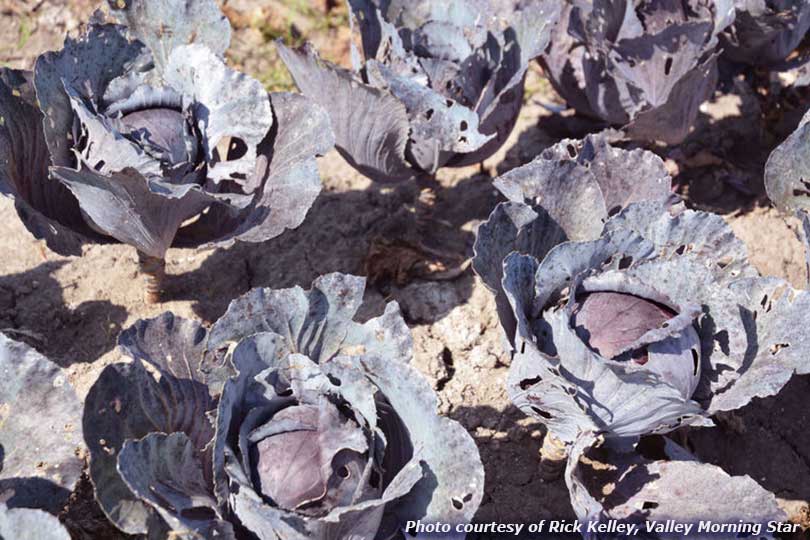The Valley Morning Star reports produce growers in the Rio Grande Valley are struggling to save their cool season crops after the mild winter and pests have caused an “agricultural catastrophe.”
Fields of red cabbage that have been stressed by insect pests and hot winter weather did not meet size this growing season.
“There are probably guys who will have abandoned their fields,” Texas A&M AgriLife professor and vegetable specialist Juan Anciso told The Valley Morning Star. “They didn’t make size because of the heat and insect damage.”
Record-breaking heat in February combined with unseasonably heavy rains in March and low produce prices have caused the perfect storm for growers.
Thrips have caused widespread damage in fields and have been “unusually resistant” to control measures growers typically use.
“The thrips were the worst I’ve ever seen,” Anciso said. “We couldn’t control ’em. We couldn’t kill ’em. We tried traditional, biological, traditional chemicals and they just wouldn’t kill ’em.”
Other pests, including worms, have also had an impact on the quality of cabbage and leafy greens. Anciso said the worm populations are the worst in 20 years.
Tommy Hanka, a cabbage, onions and leafy green grower in the Edinburg area, said “it’s just a train wreck.”
Onion growers in Idaho, Oregon and Washington are holding back their onions in storage facilities hoping for a better deal and that overlapped Texas onion production.
“They store those onions for seven-eight months easily and it was hard to compete with those guys,” Hanka said. “Their production costs are much less than ours.”
Hanka noted that Mexico is also growing more onions.
“This year, we were a little bit early on the onions but our onions came on top of their onions, and it was just a train wreck. A tough year to be in the vegetable business in South Texas,” Hanka told The Valley Morning Star.
Ansico said that there isn’t a lot worth picking as unharvested cabbages rot in Valley fields.
“I would definitely say that as far as the cool-weather crops like onions and cabbage go, this is a season to forget about,” Anciso said. “It’s been really bad. Other crops like cilantro and leafy greens as well.”
The impact in prices at the grocery store aren’t expected to be significant since produce buyers have alternative sources of vegetables from areas which weren’t affected by winter growing conditions.

